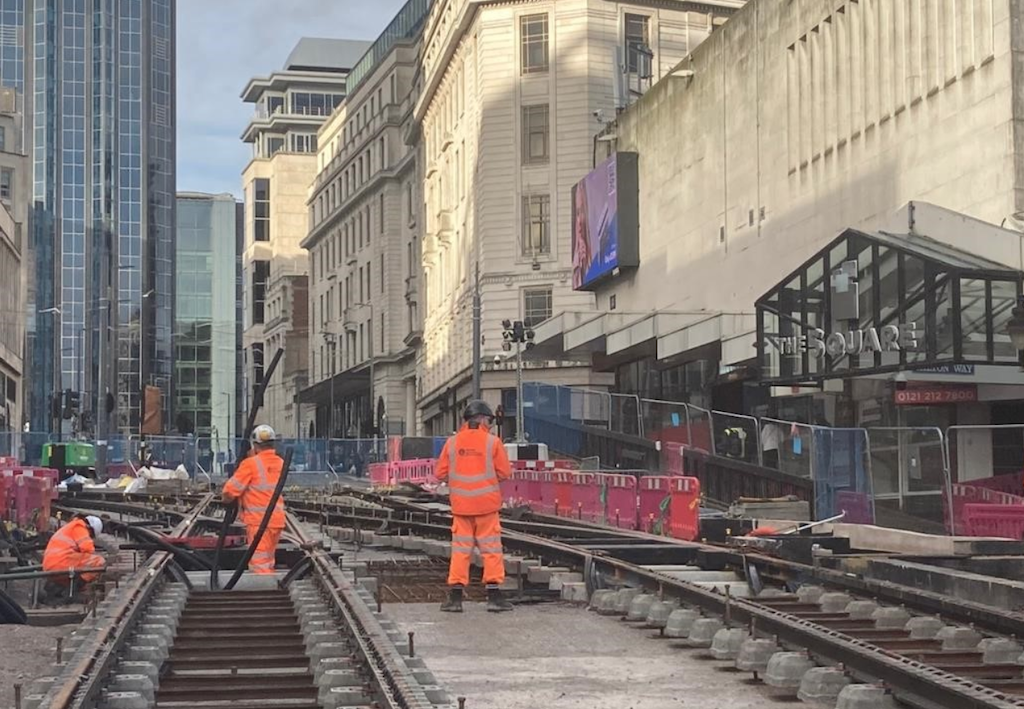Birmingham’s Eastside Metro extension milestone marks pivotal moment
Work is underway in Birmingham on the first section of track installed on Lower Bull Street as part of the city’s Eastside Metro extension project which will open up access to the planned HS2 Curzon Street station.
The Midland Metro Alliance (MMA), which is delivering the scheme on behalf of Transport for West Midlands (TfWM), recently fixed the 130m section of double track following a concrete pour in December creating the base for the track and sleepers. The new section of track is part of the “delta junction” which will allow trams to travel in six different directions between Digbeth, Edgbaston and the Black Country.
Michael Anderson, Metro Programme Director at TfWM said, “This latest milestone highlights the progress the team at the MMA are making on the Birmingham Eastside Metro extension – one of the major projects we are delivering to enhance public transport and ensure more people across the West Midlands have an easy connection to the forthcoming HS2 Curzon Street station.”
The works in the Lower Bull Street and Dale End areas of the city centre have been running concurrently with the Metro activity along Digbeth High Street where urban realm improvements have recently been completed.
Maria Ion, Project Director at the Midland Metro Alliance said, “The installation of track on Lower Bull Street is a pivotal moment for the project. A total of 80 metres of track has been installed along the Wolverhampton to Digbeth route, and 50 metres along the Edgbaston to Digbeth line. Work will be ongoing in both Lower Bull Street and Digbeth High Street throughout the year and we will continue to work closely with partners to minimise any disruption wherever possible.”
The Birmingham Eastside Metro extension will run from Bull Street, in the city centre, to Digbeth, adding four new tram stops to the Metro network. More than half of the 1.7km route is planned to be free of overhead wires, similar to the extension from Grand Central to Centenary Square.

